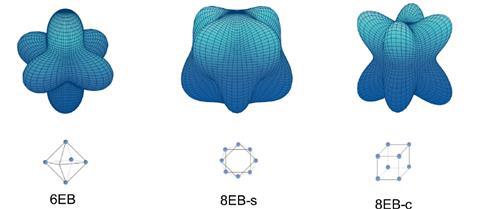Chemists at the Indian Institute of Science have produced bubbles that contain either six or eight electrons. The bubbles are nanometre-sized cavities, which are formed by injecting electrons into liquid helium.
Cooling helium-4 causes it to behave like a superfluid, something with zero viscosity. Eventually, the injected electrons come to a standstill and open a cavity repelling nearby helium atoms. Calculations show that bubbles containing up to 12 electrons are possible – here the team has produced bubbles with up to eight electrons that are stable for at least 15 milliseconds at 1.5K.

The equilibrium shape for both the six- and eight-electron bubbles, and the spacing of the electrons within them, is reminiscent of the Thomson problem. In both cases, the lowest energy configuration is not necessarily one where the charged particles are as far away as possible. In an eight-electron bubble, a cube is not the only stable shape as rotated square symmetries are also predicted to be stable.
The team envisage multi-electron bubbles finding use in the development of quantum computers, technology which could enable increasingly complex chemical simulations and calculations.
References
N Yadav, P Sen and A Ghosh, Sci. Adv., 2021, 7, eabi7128 (DOI: 10.1126/sciadv.abi7128)

















No comments yet